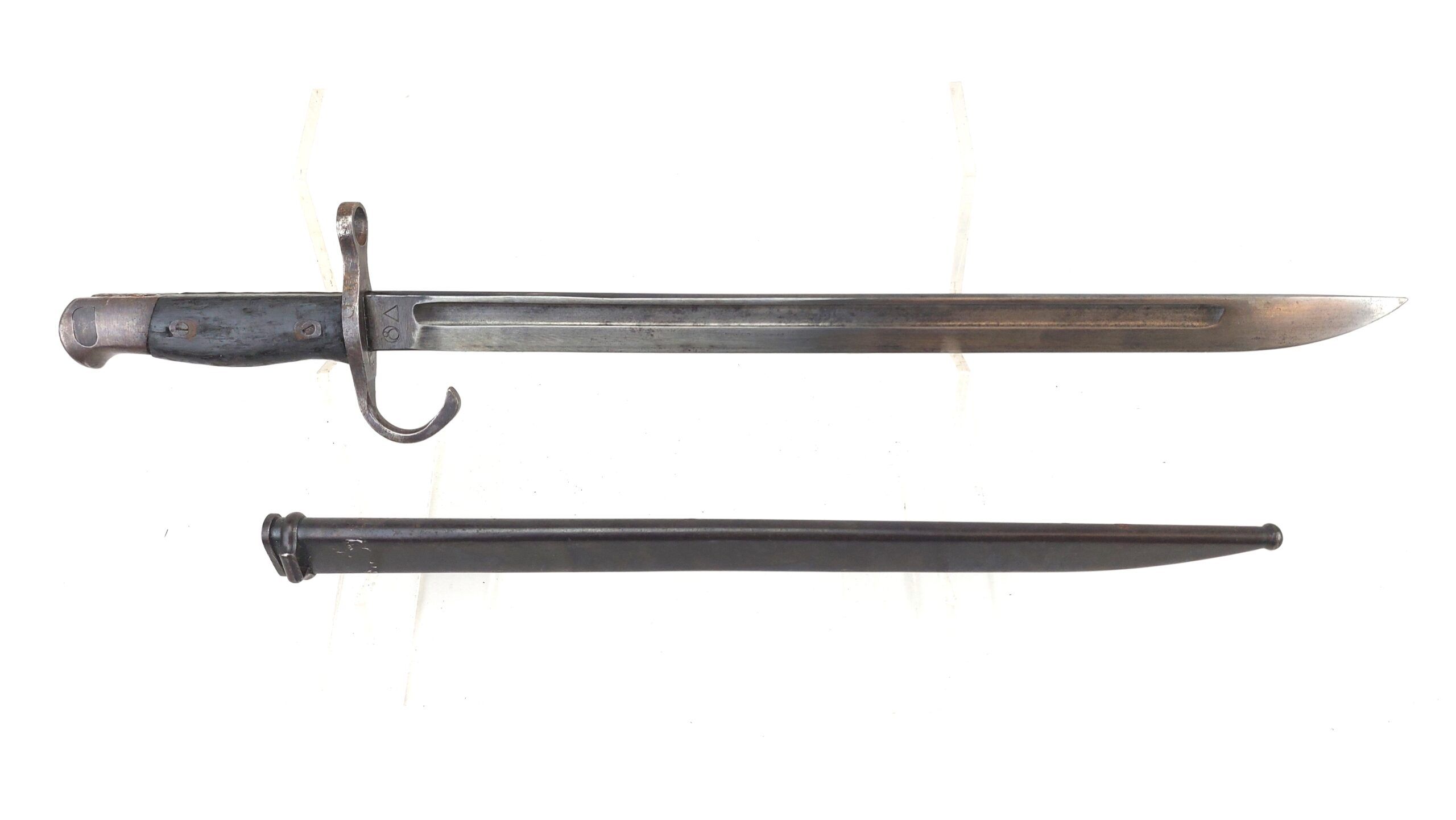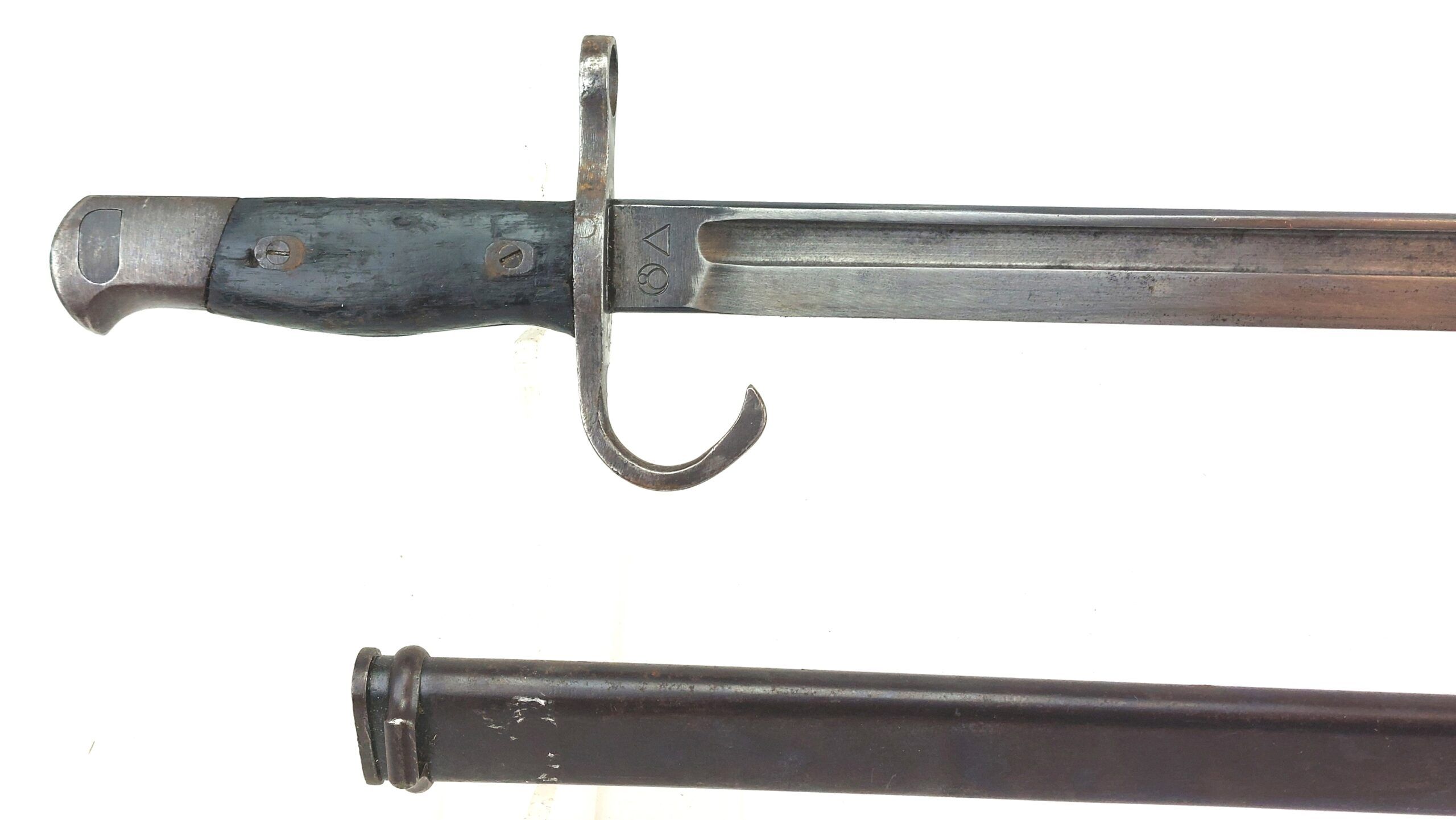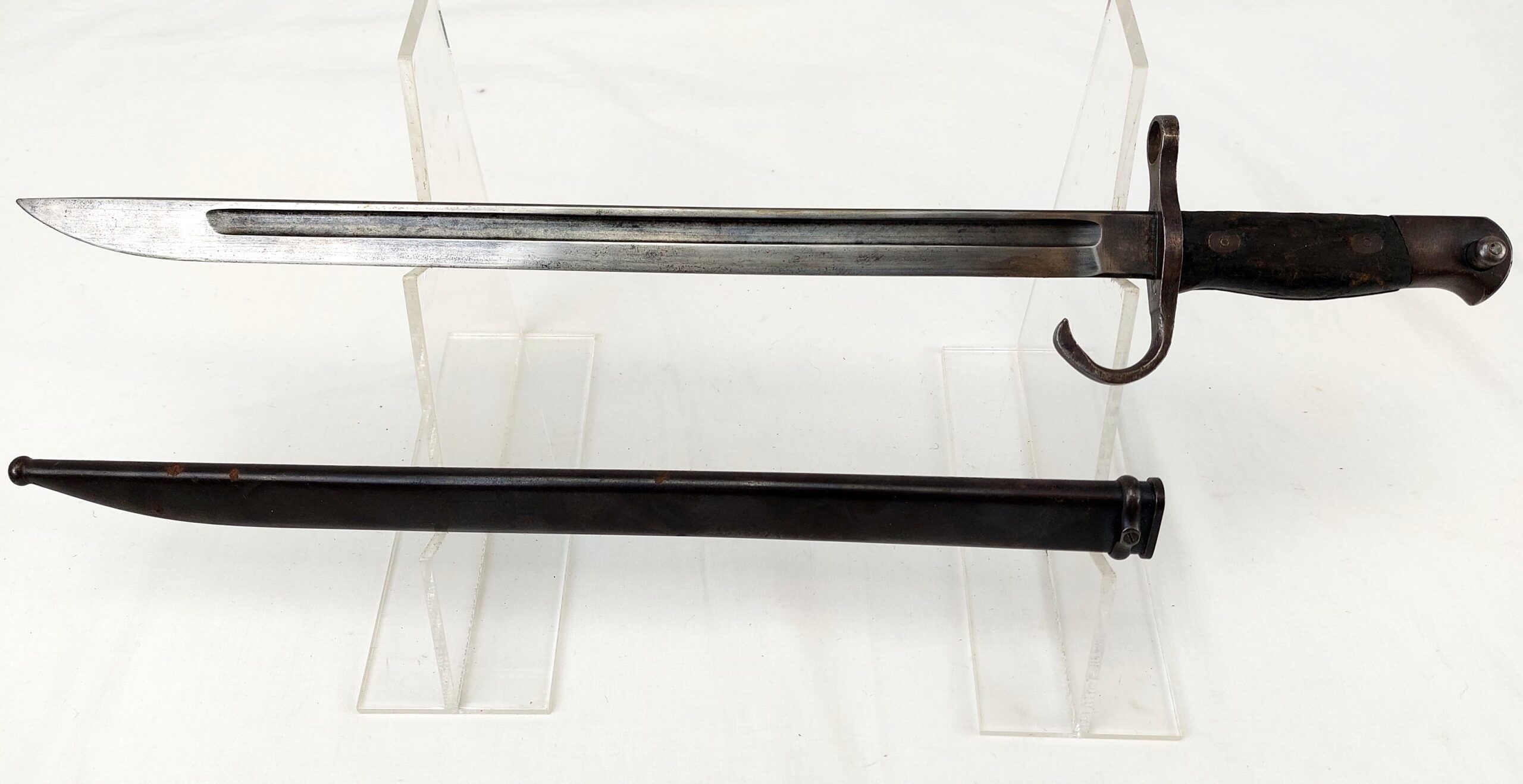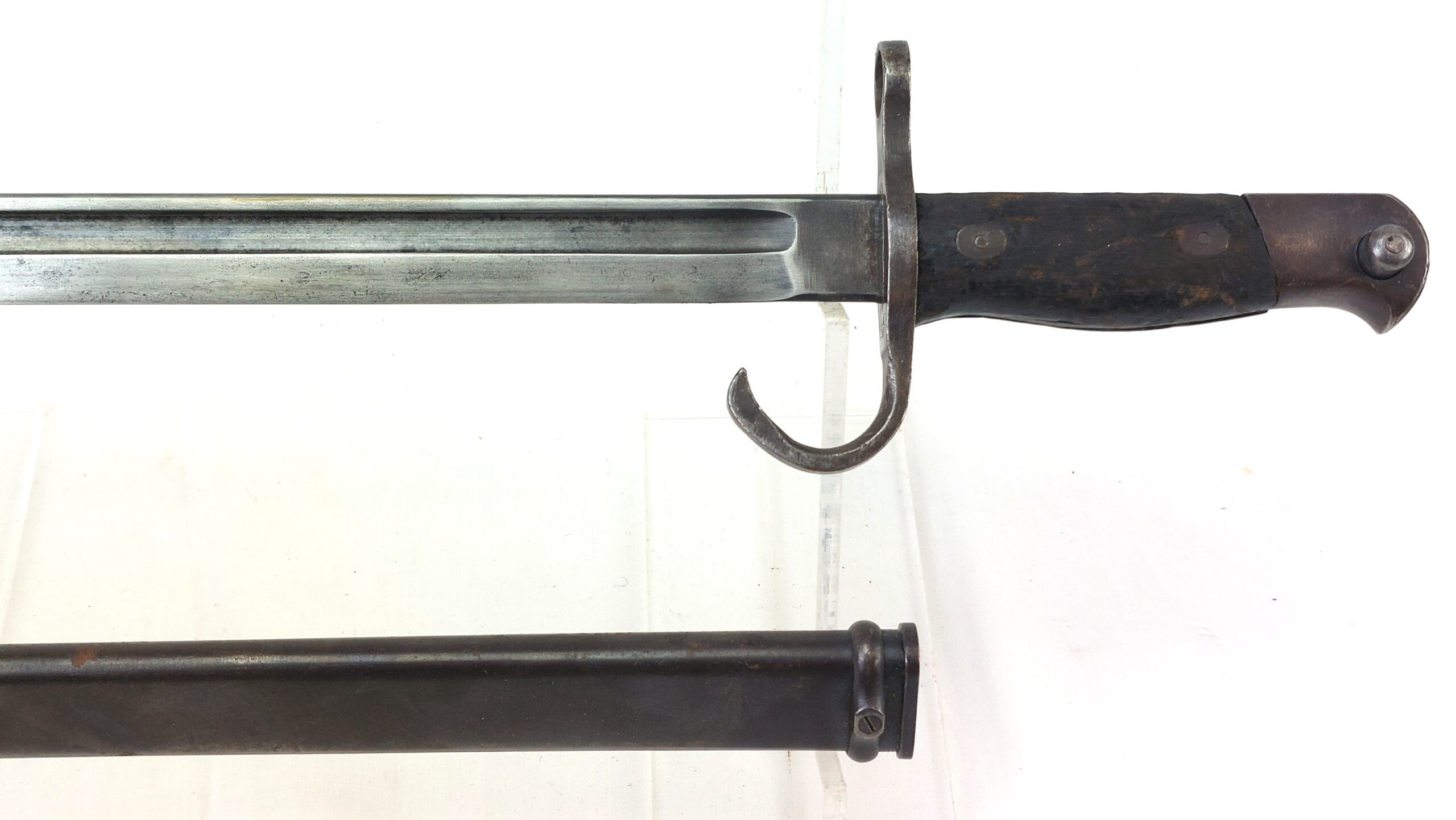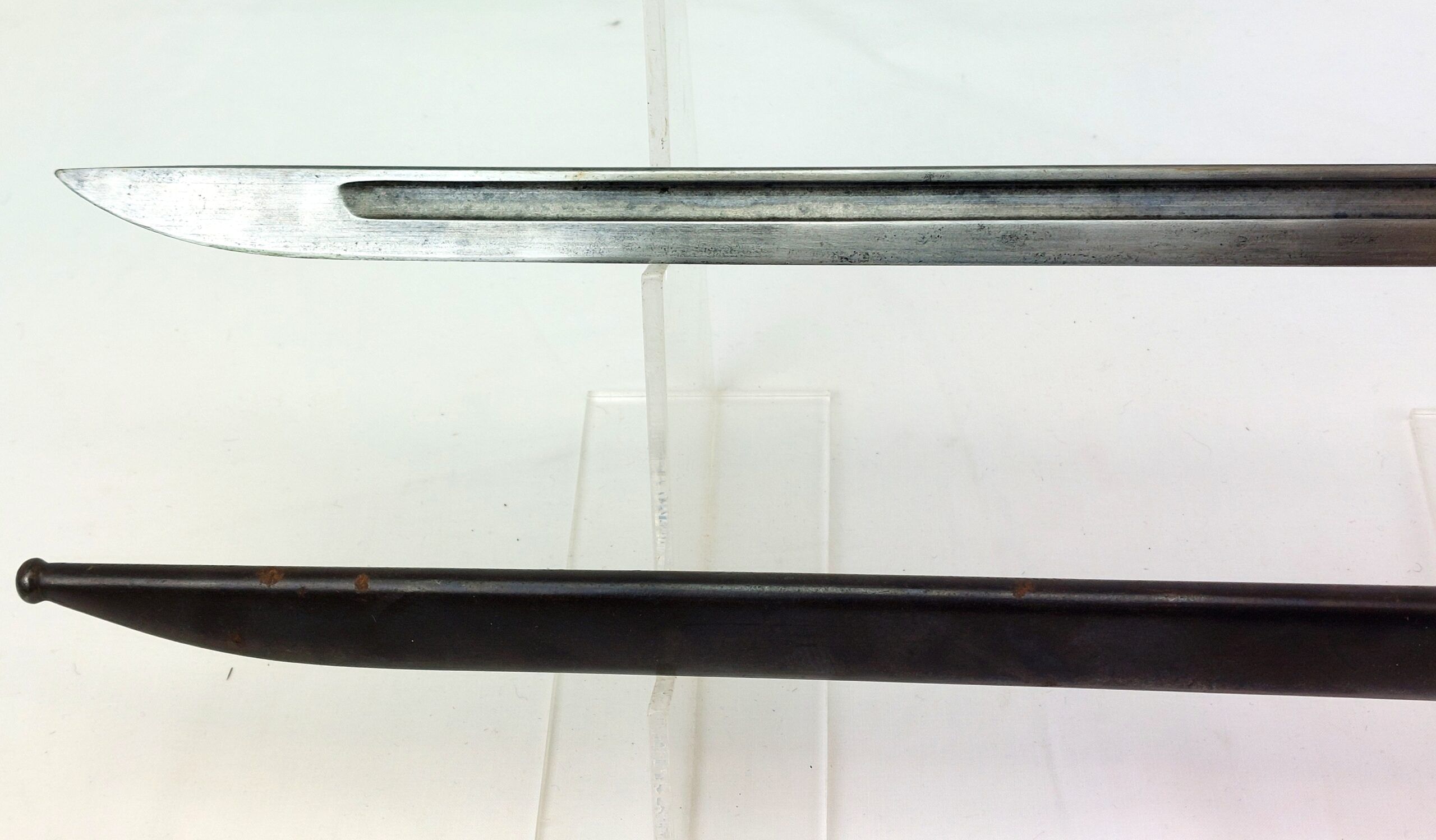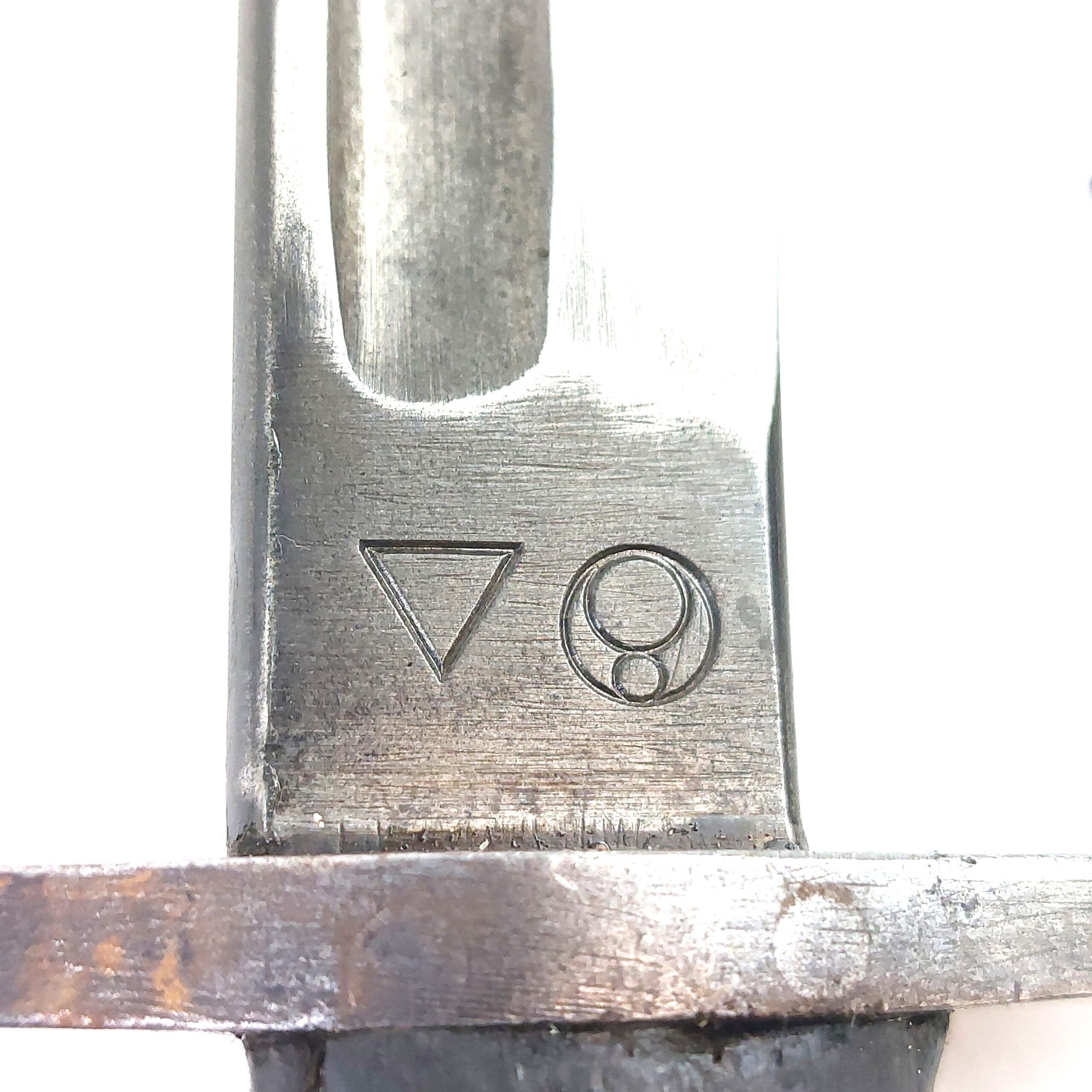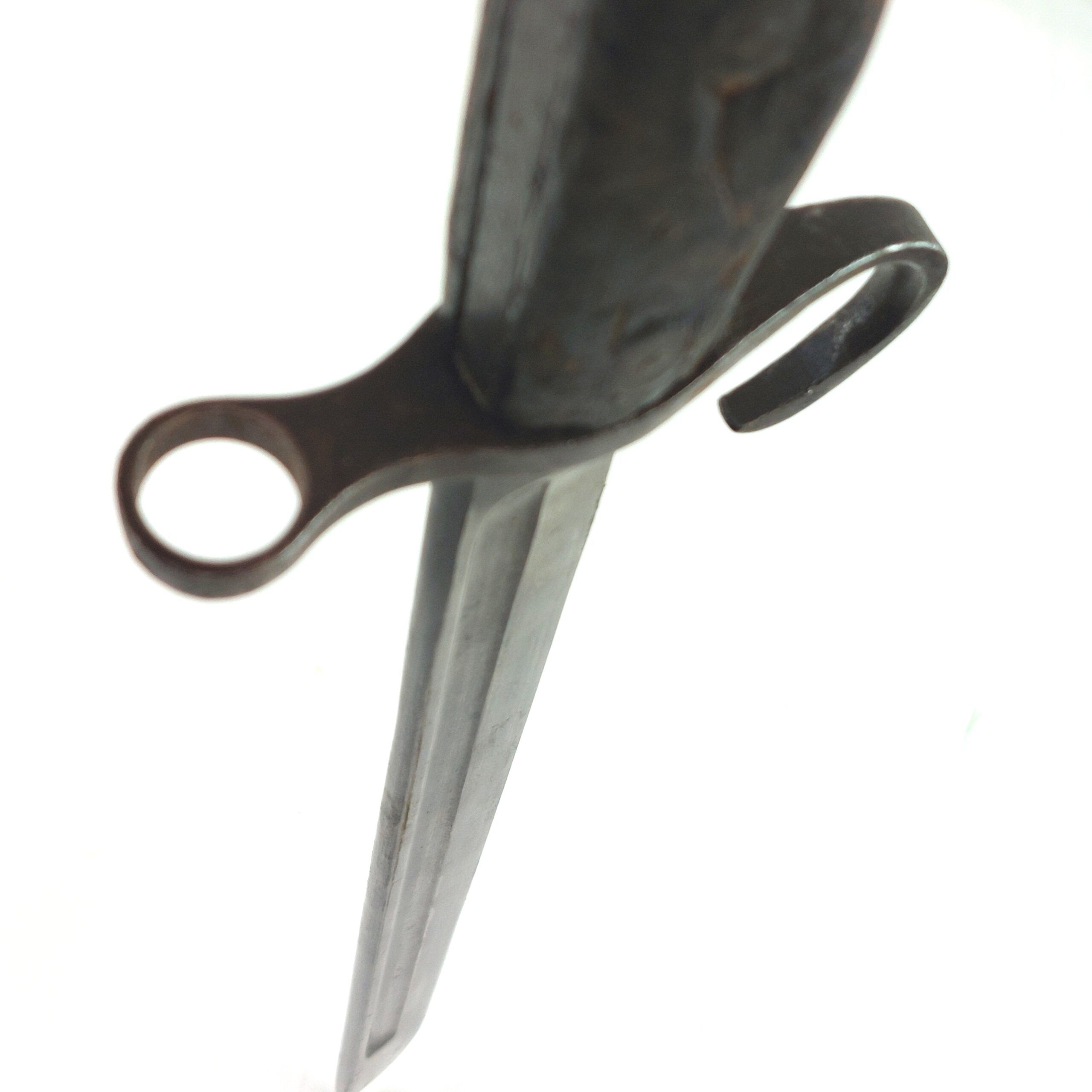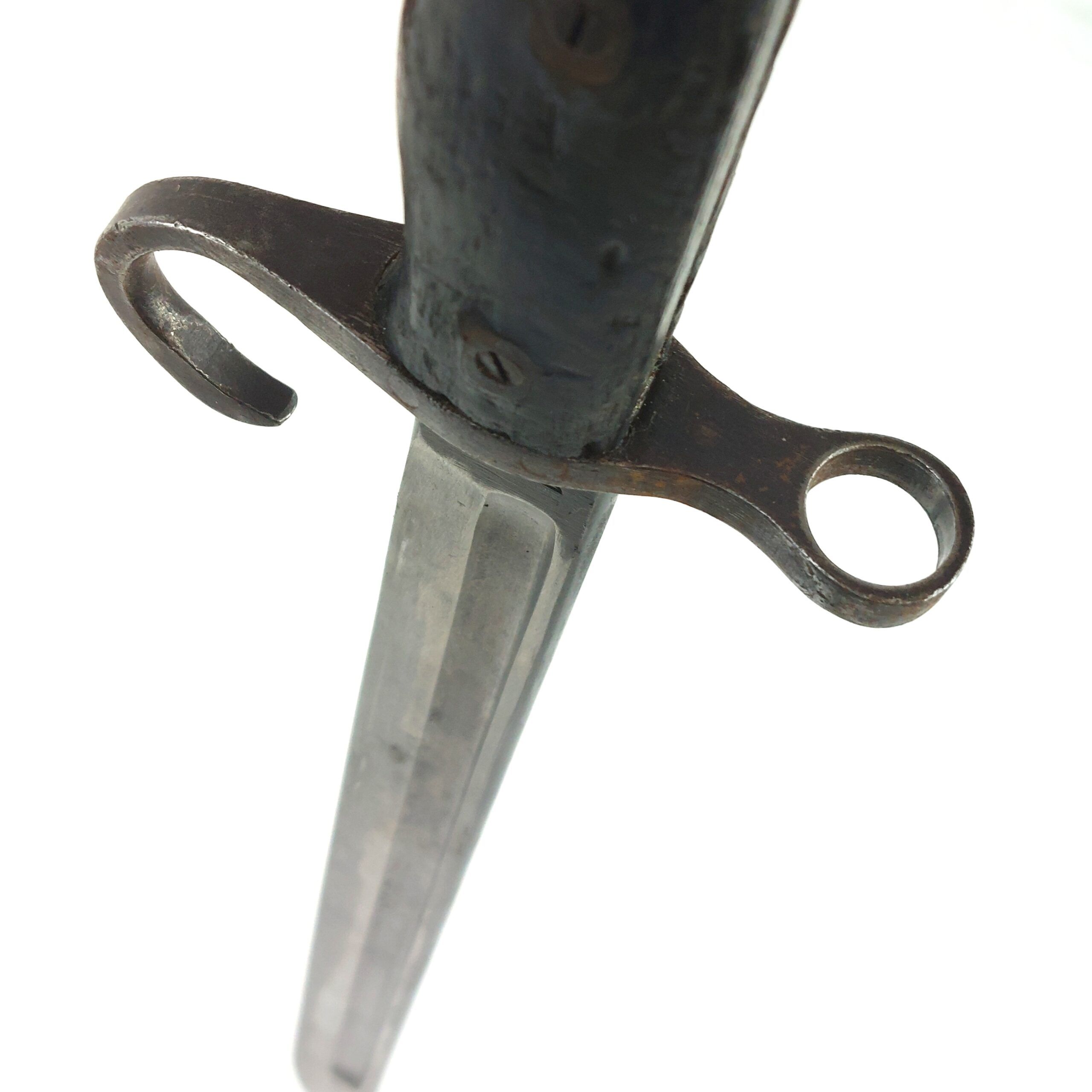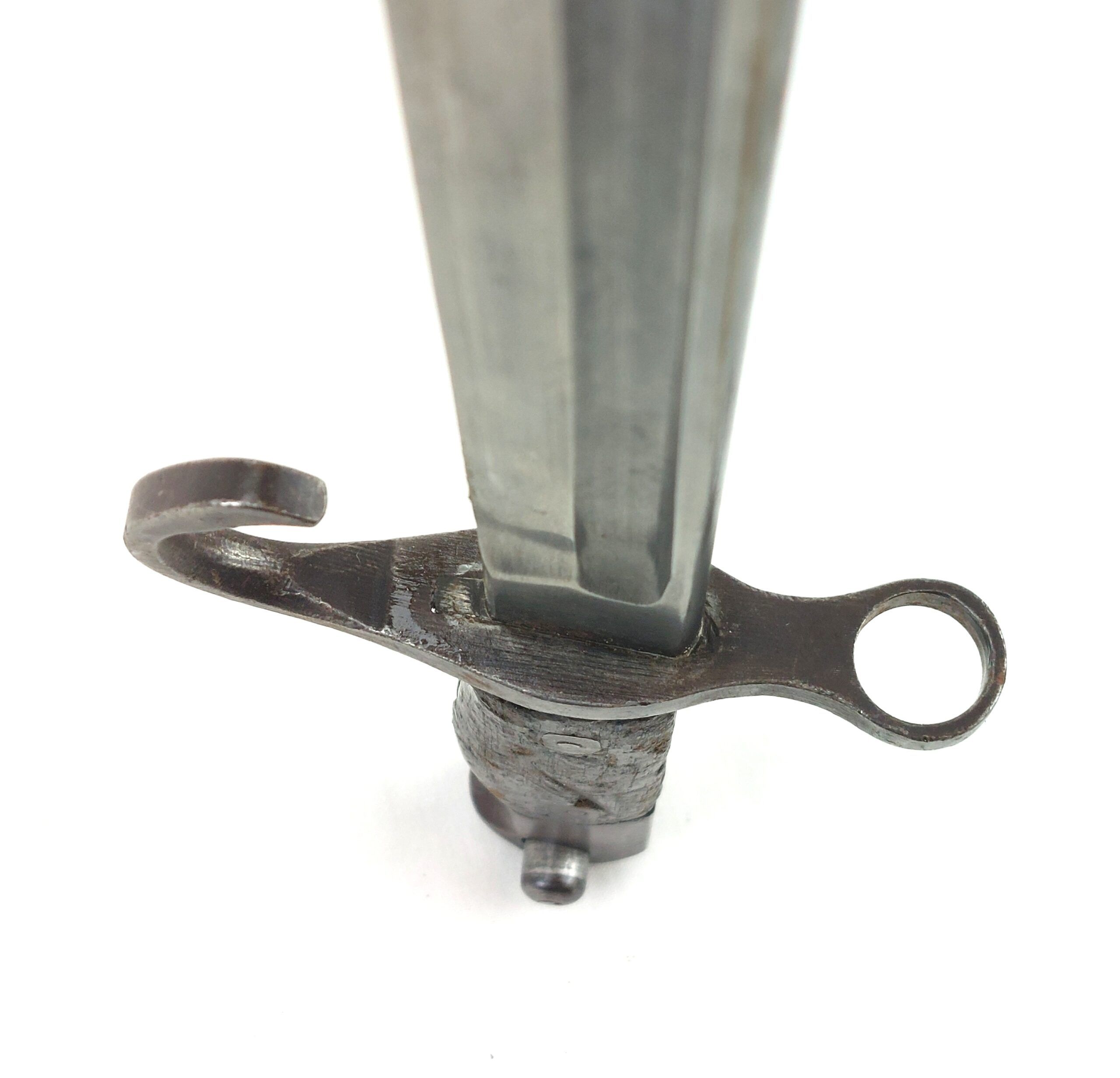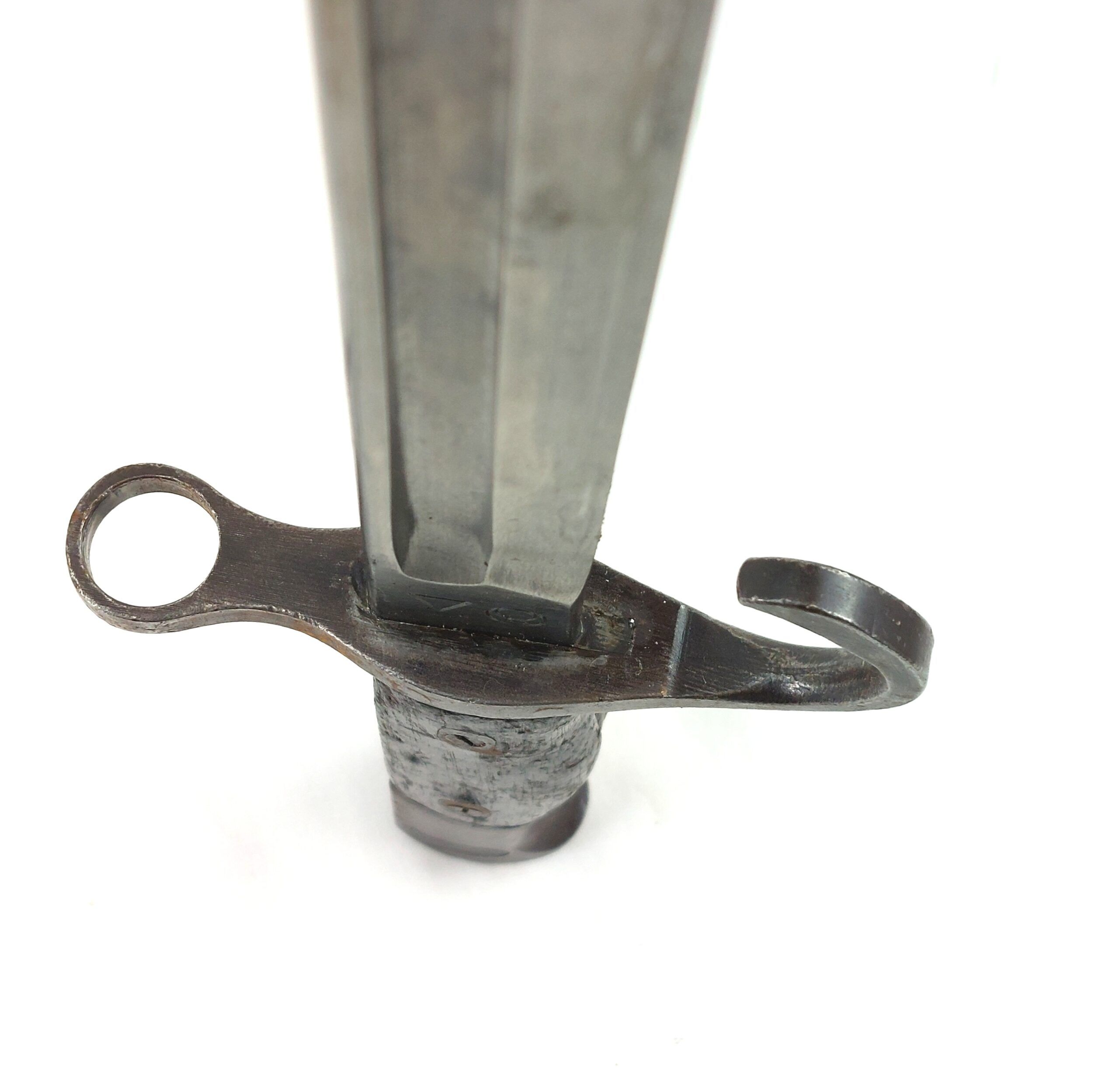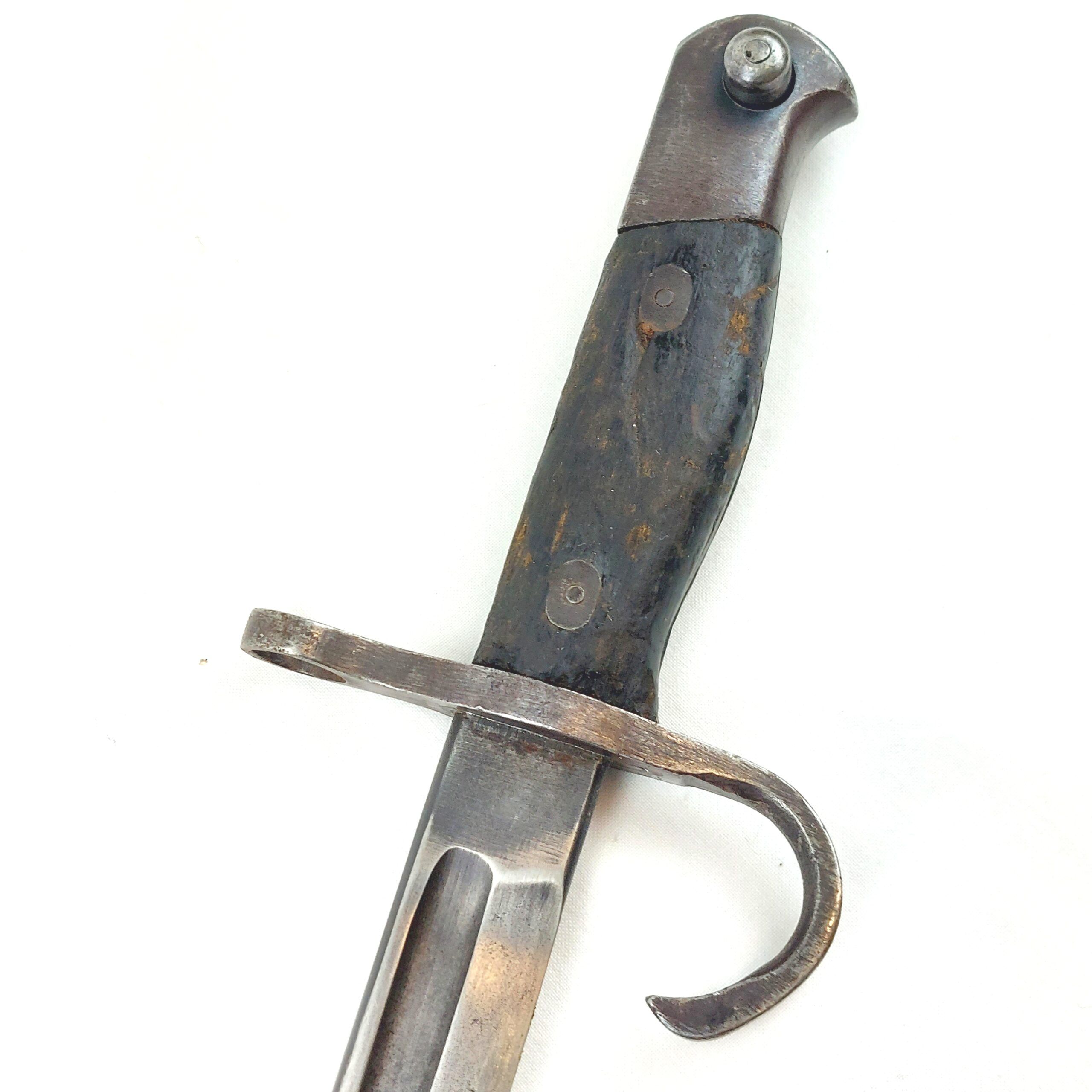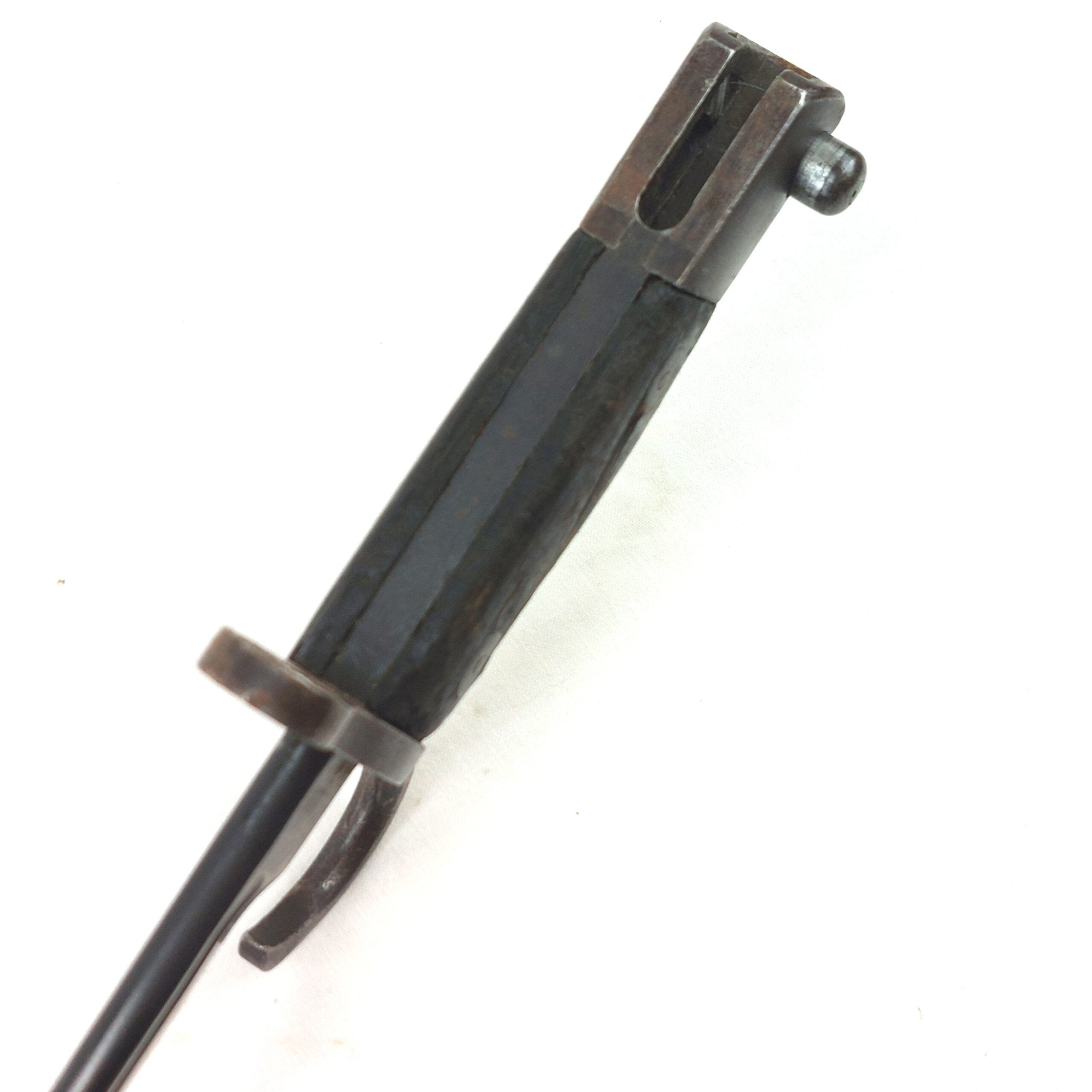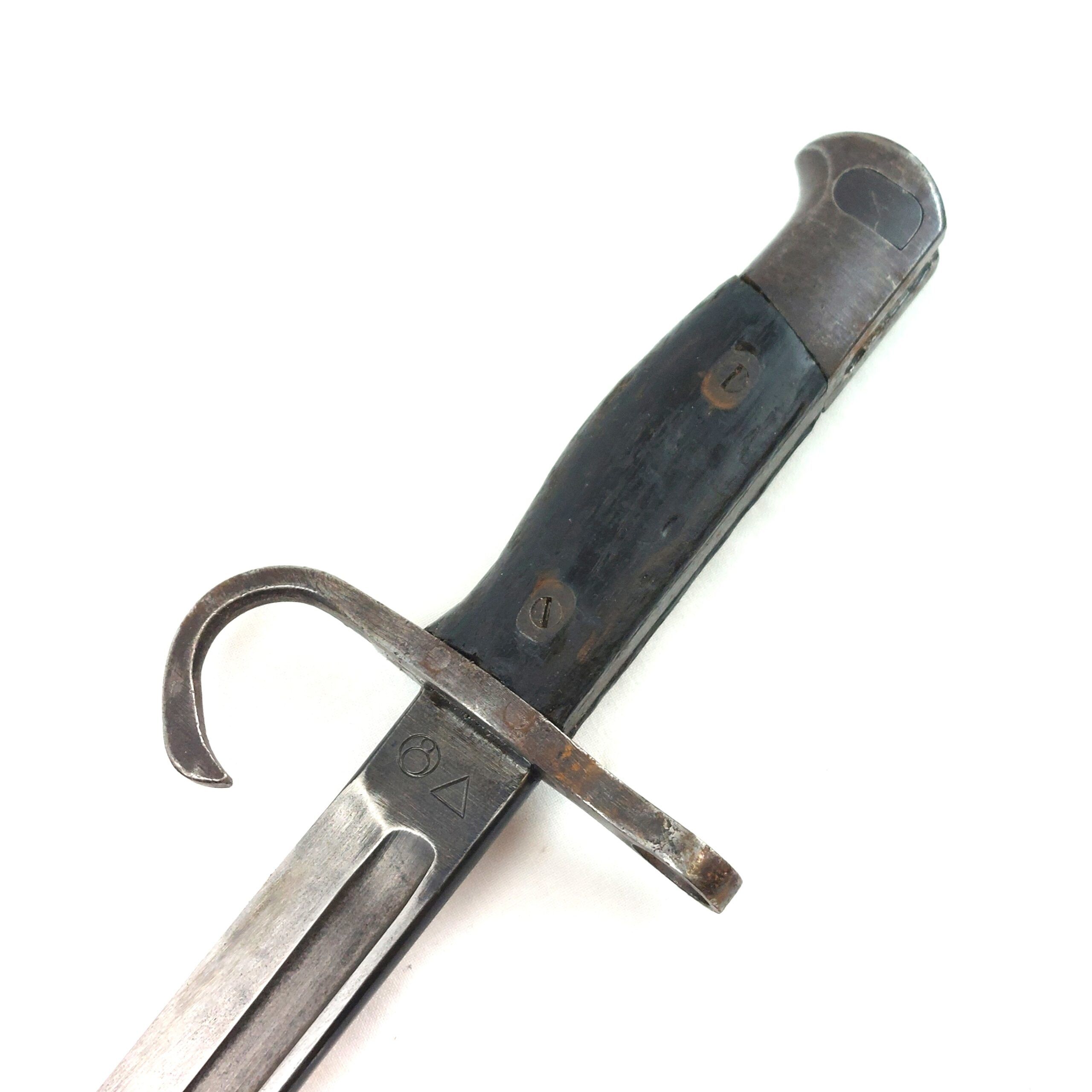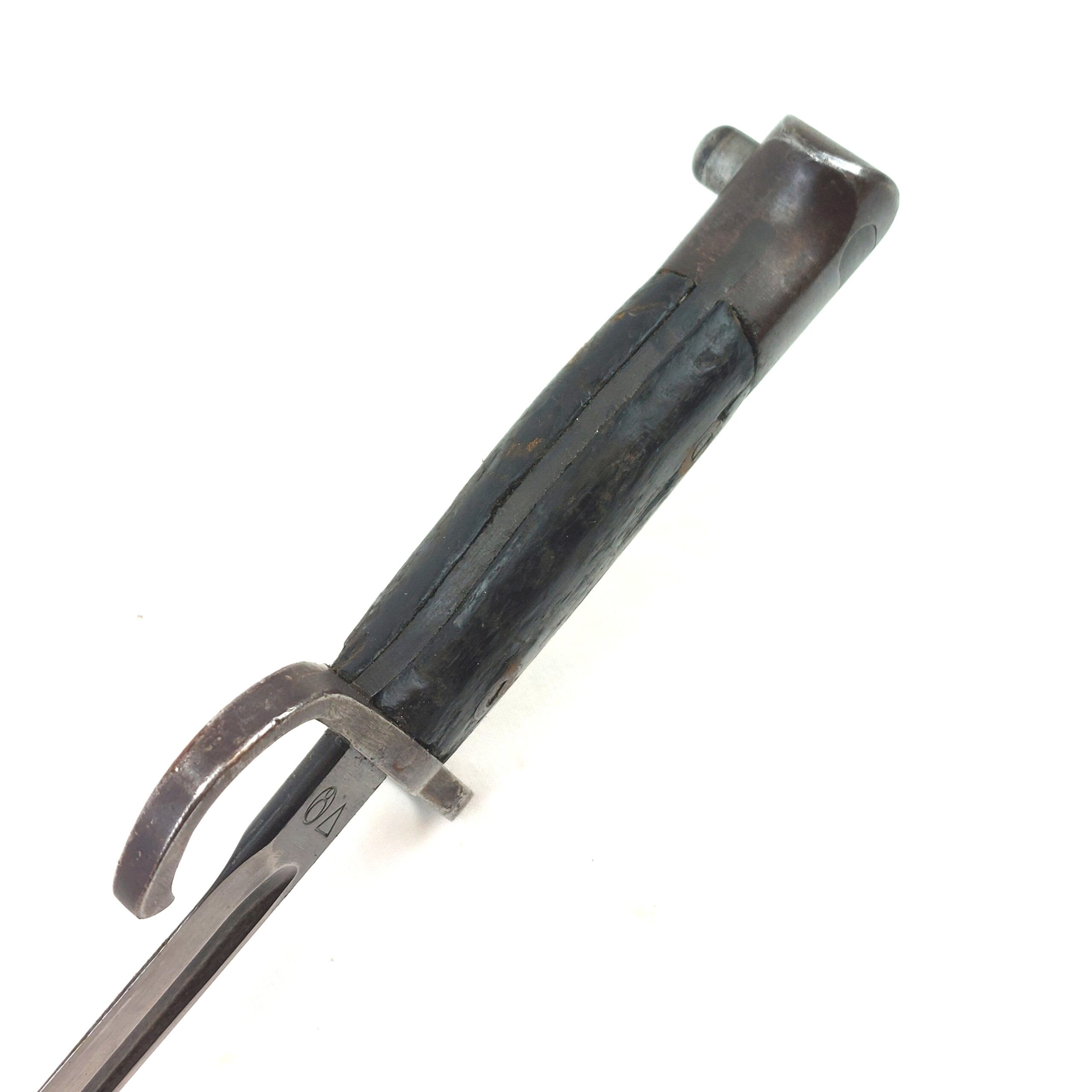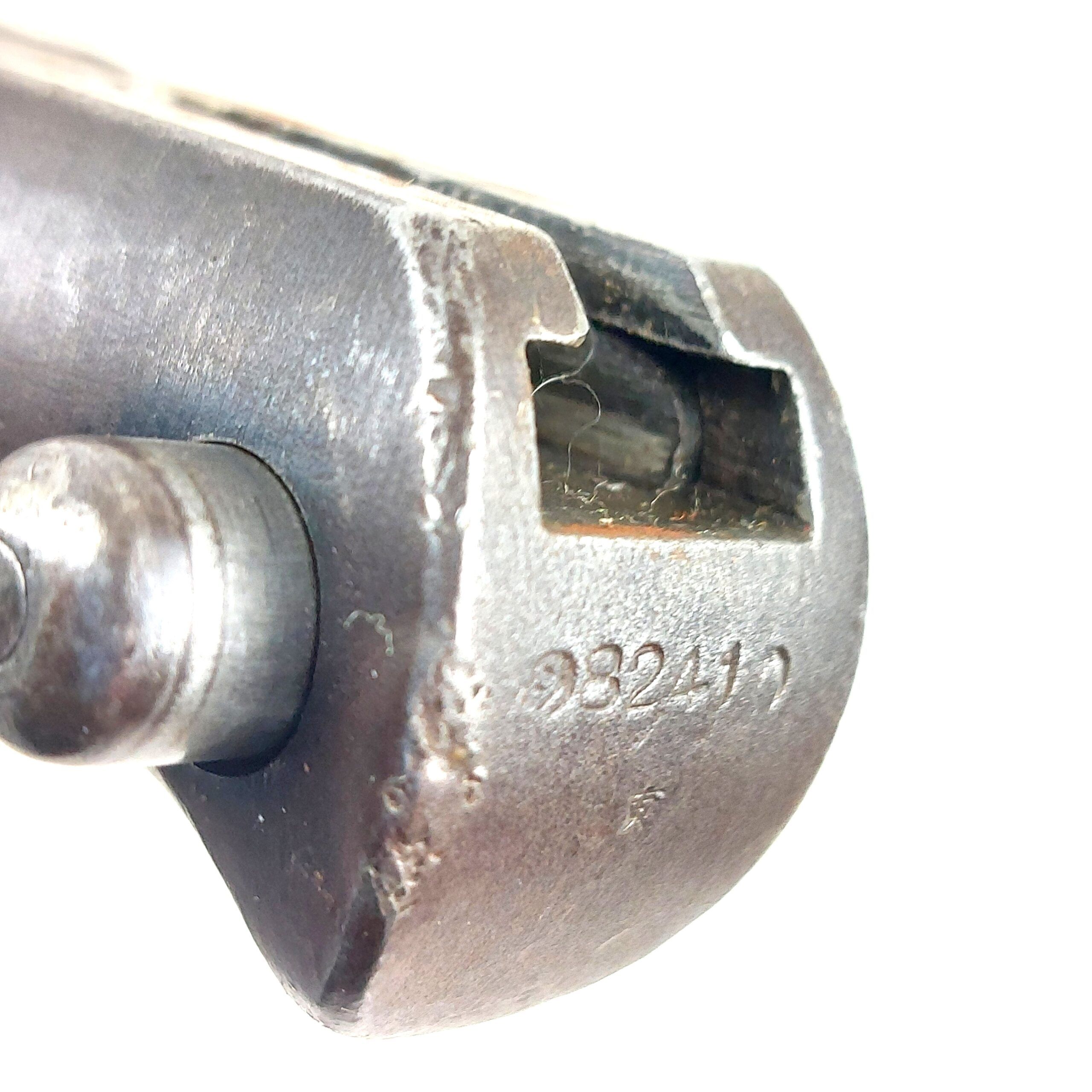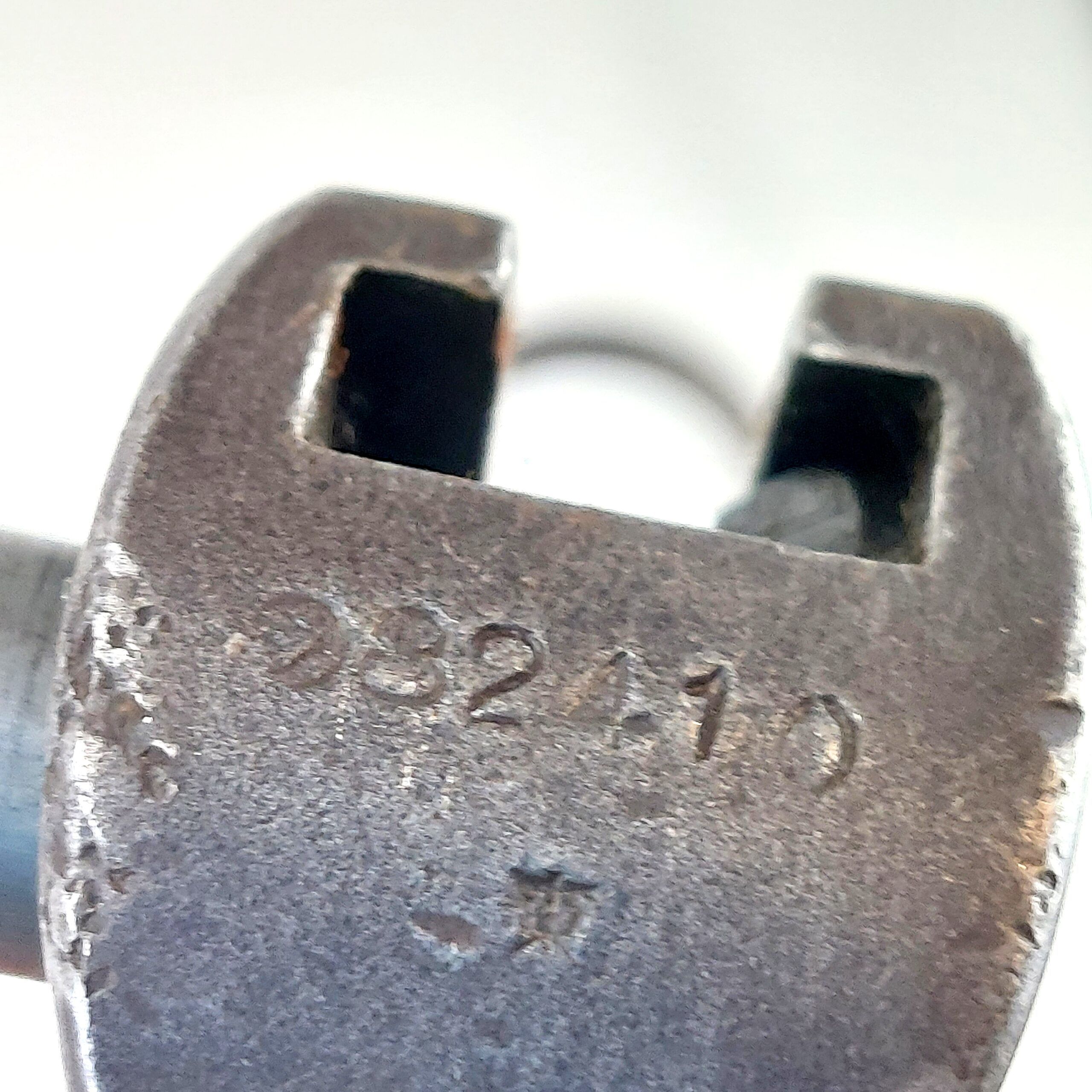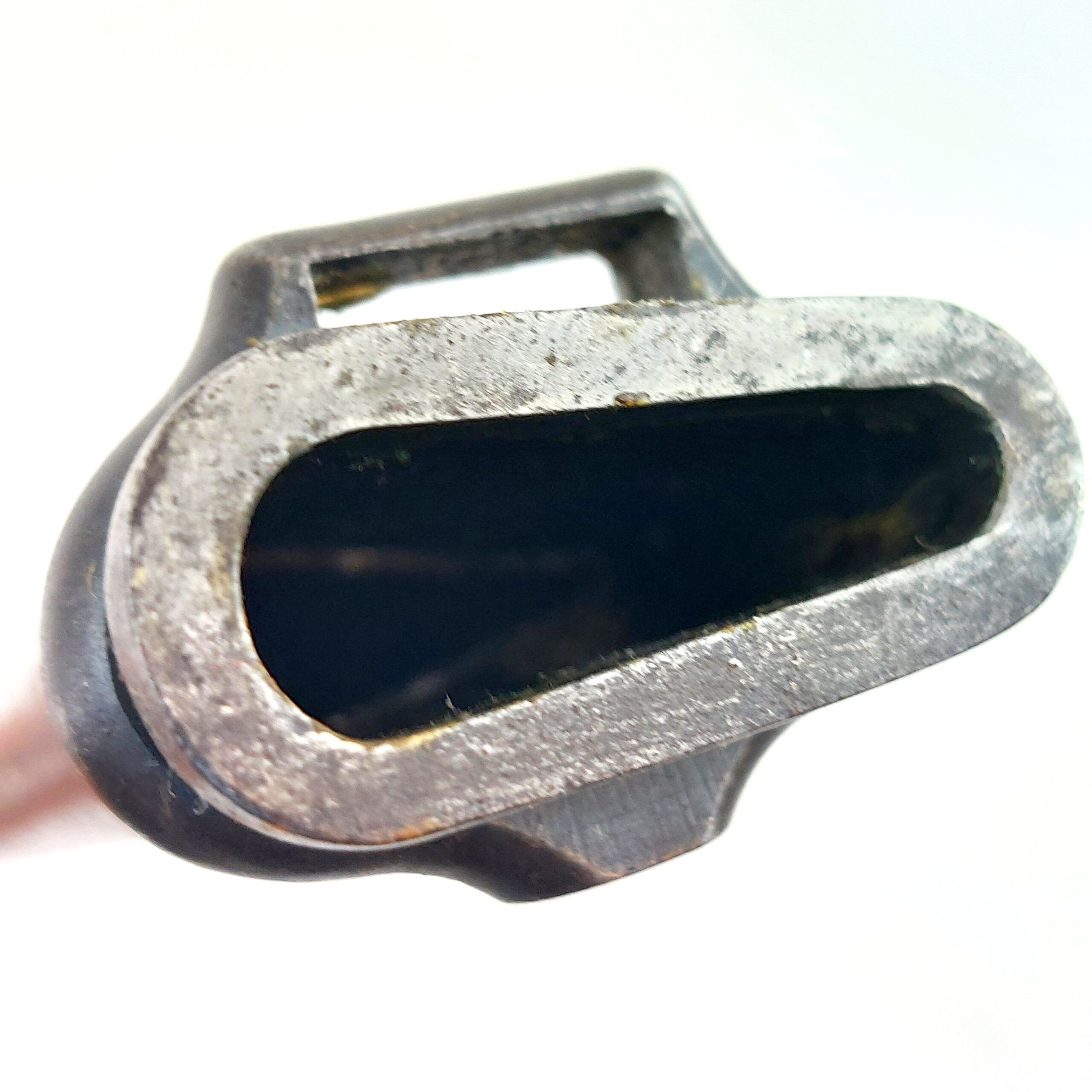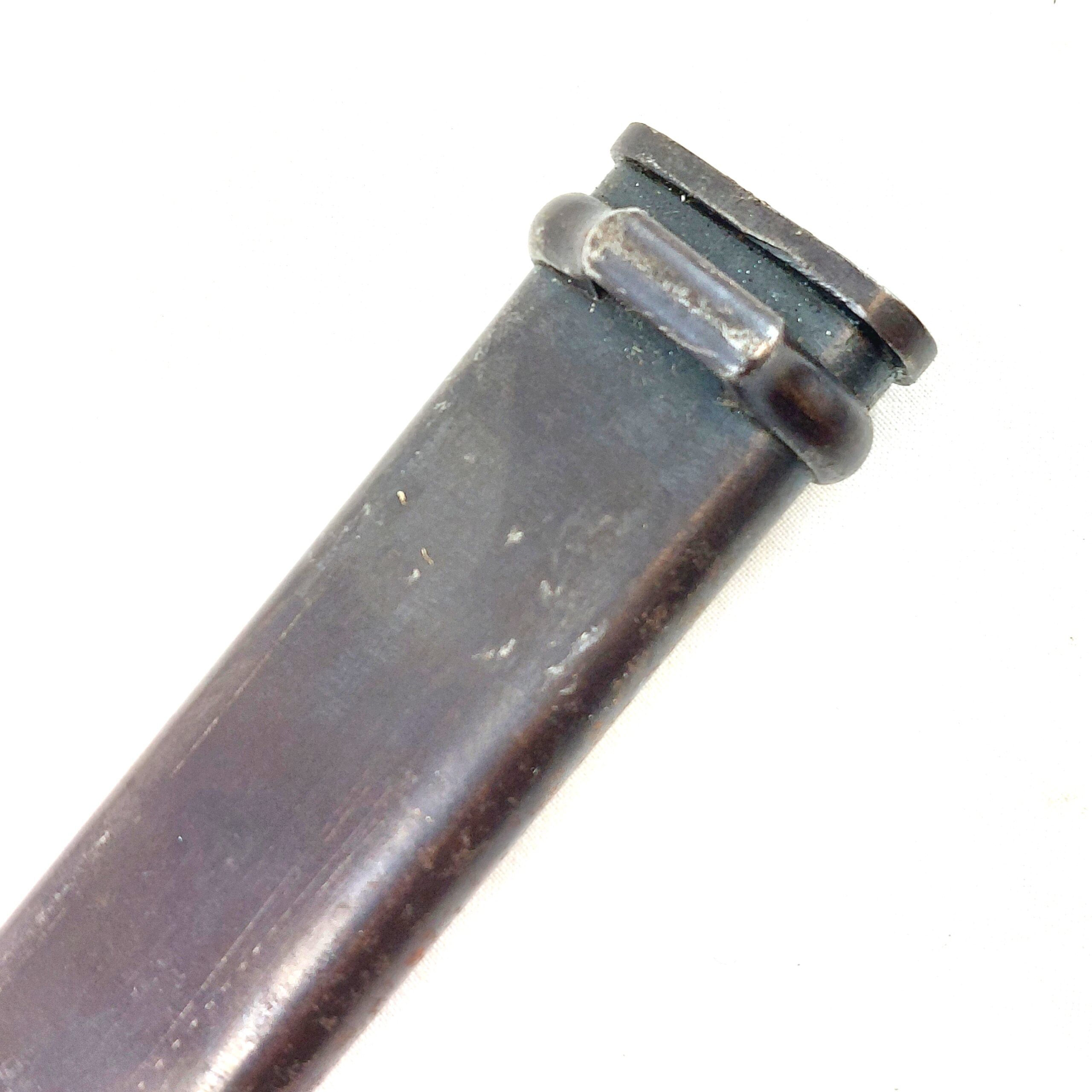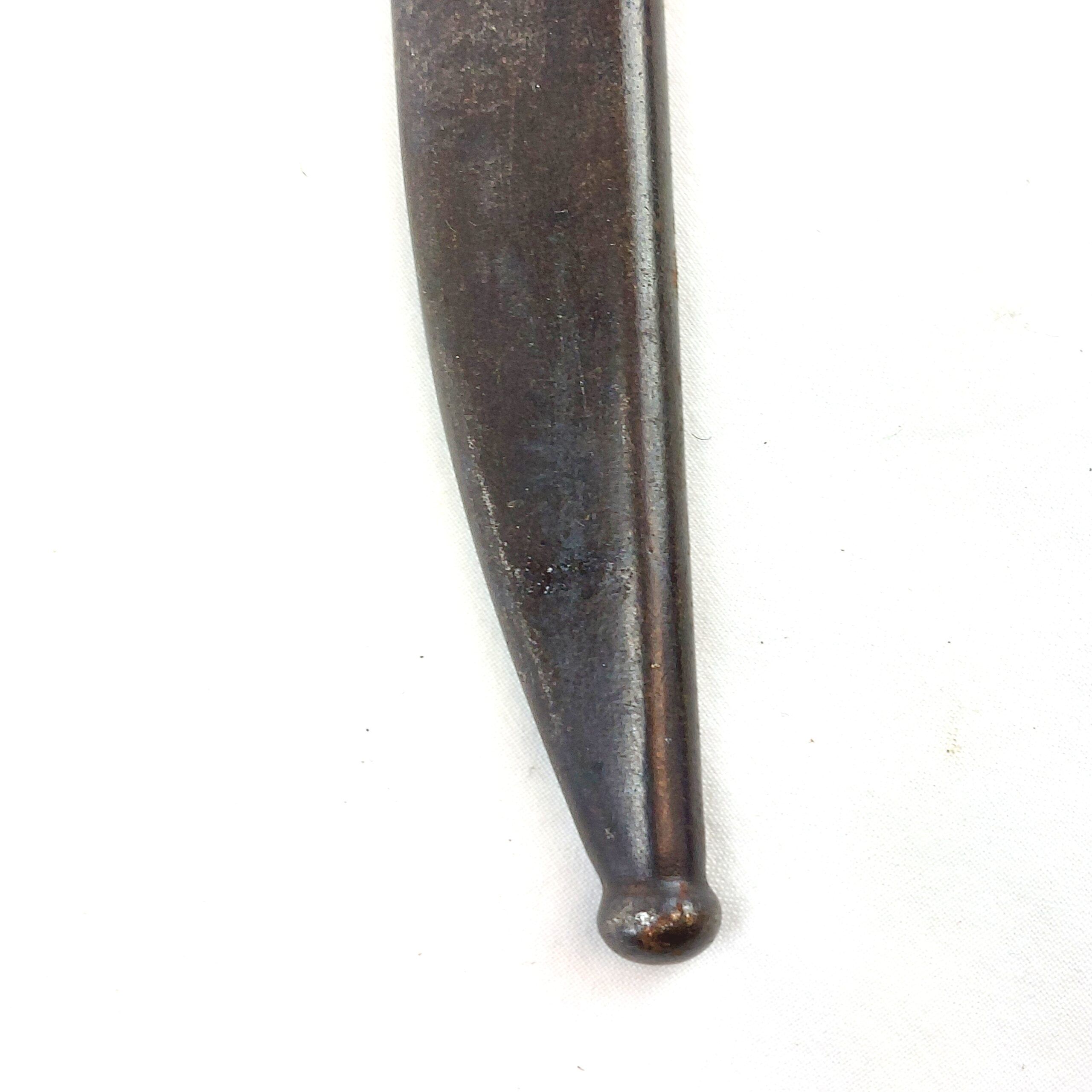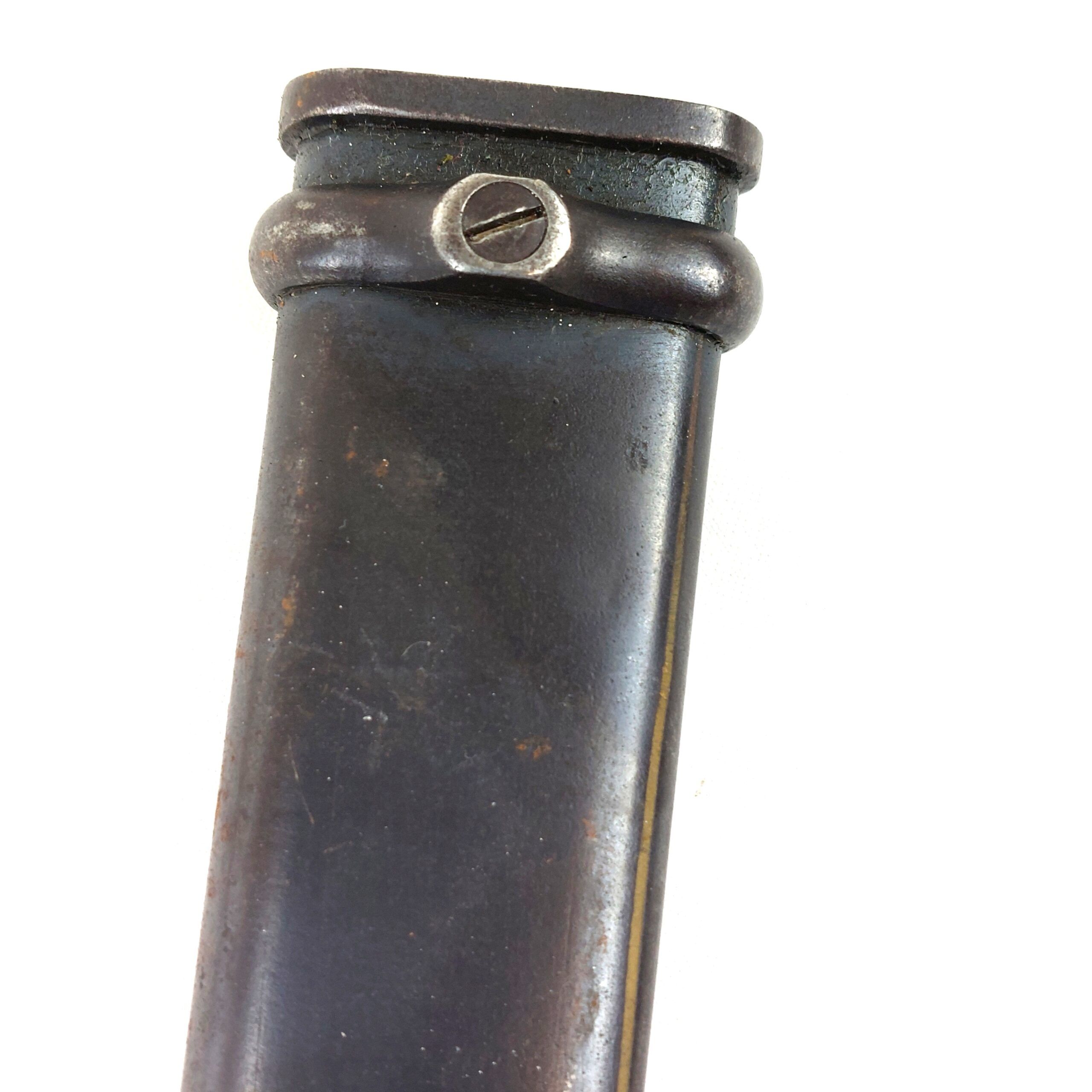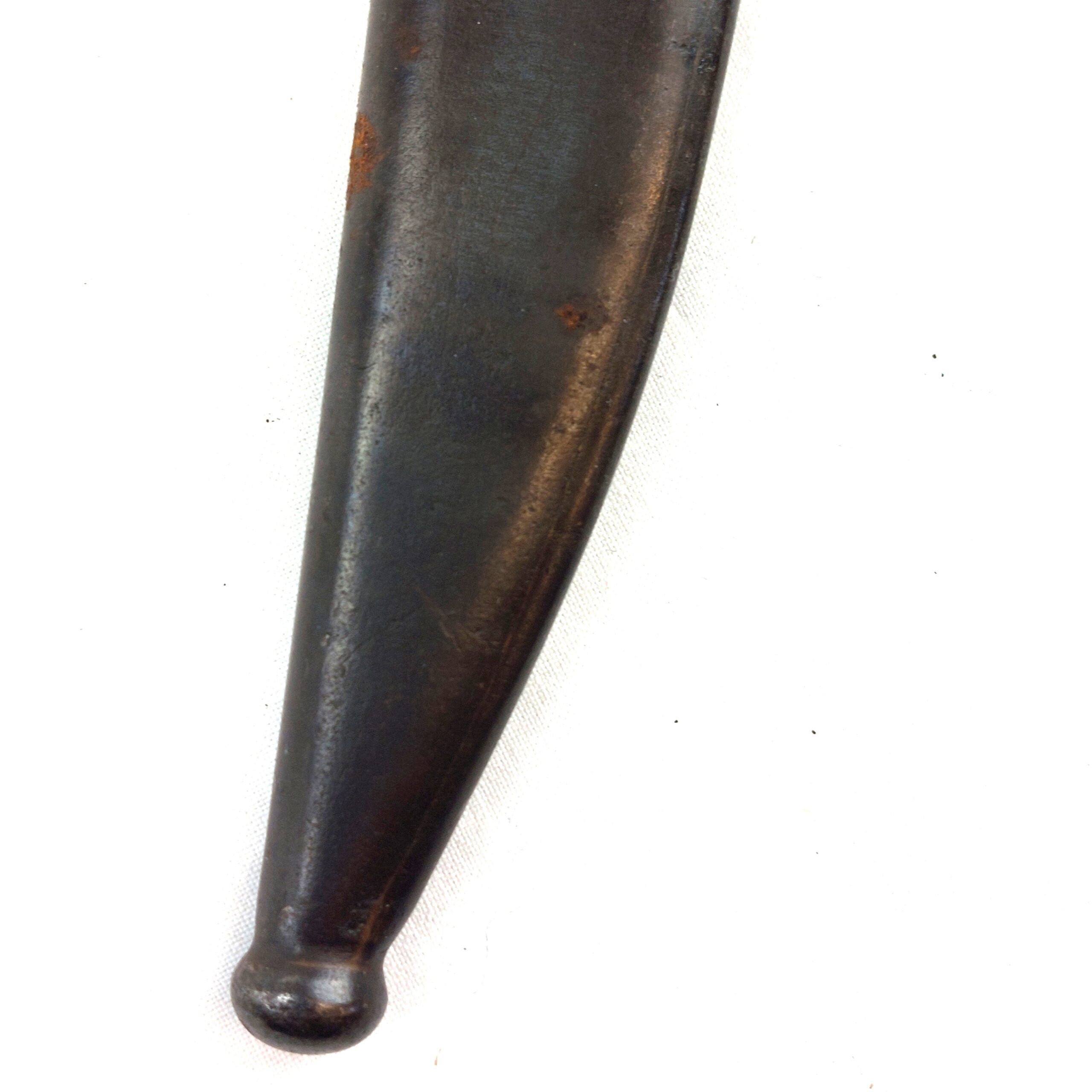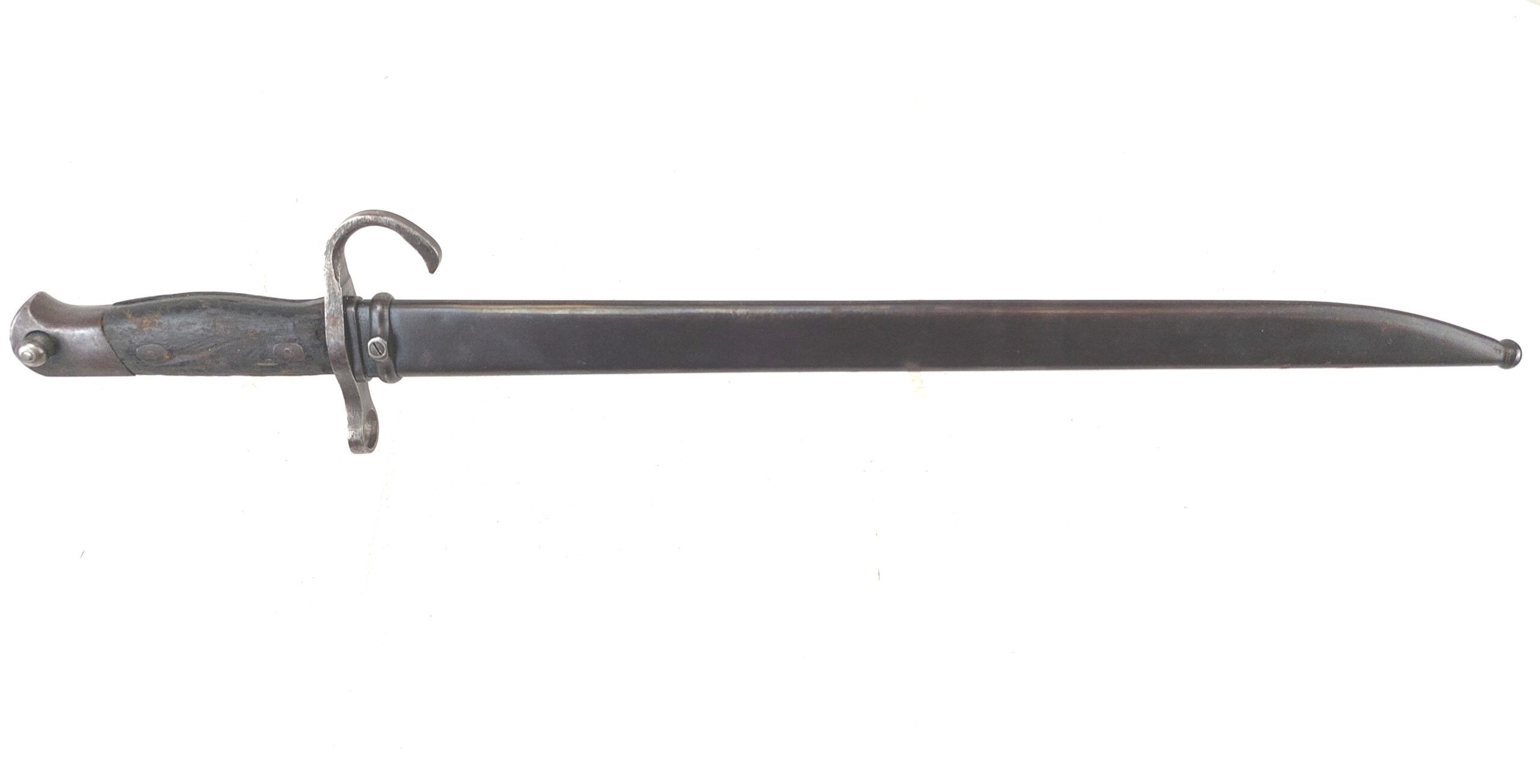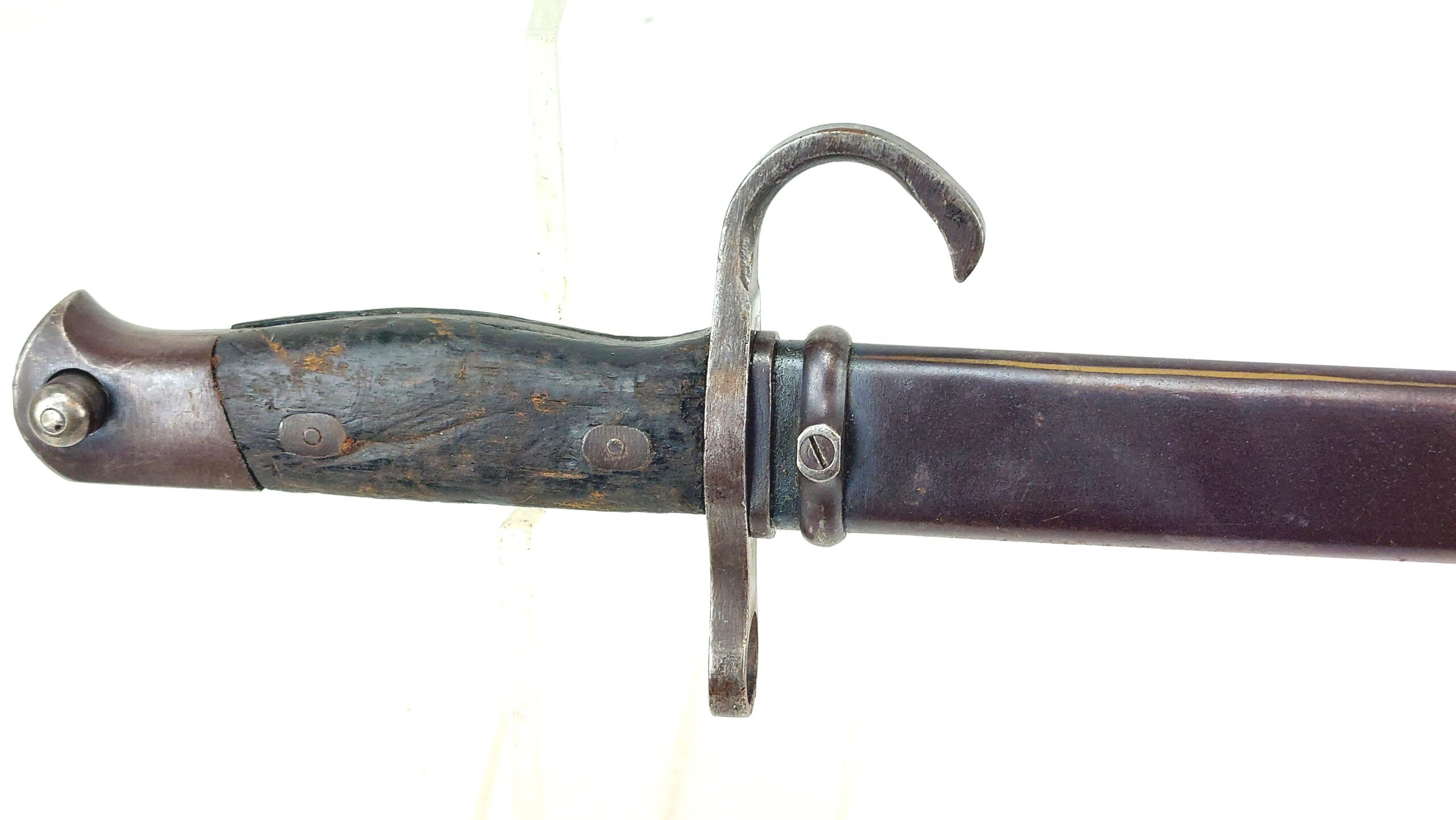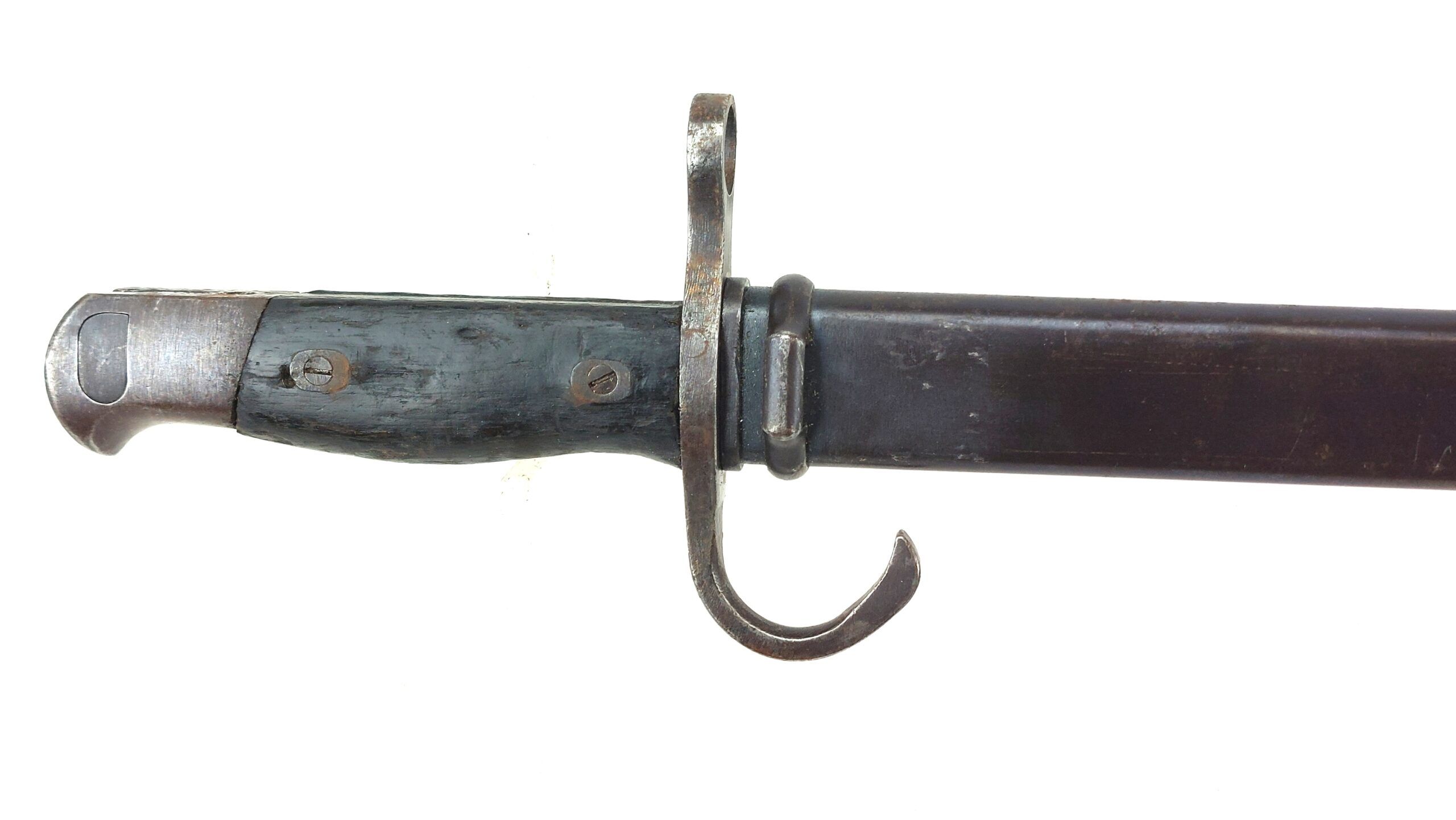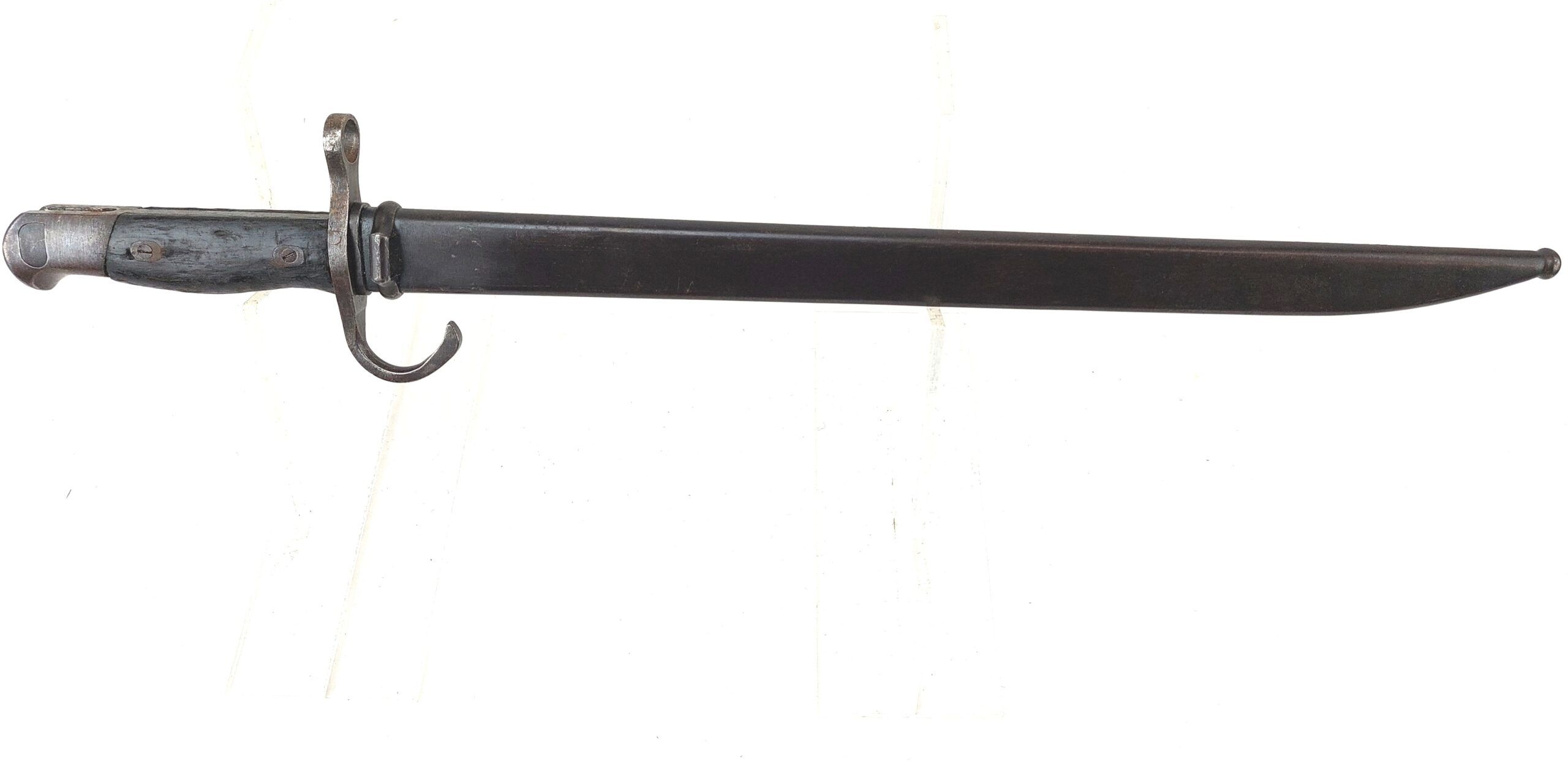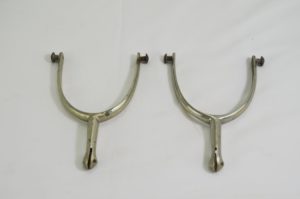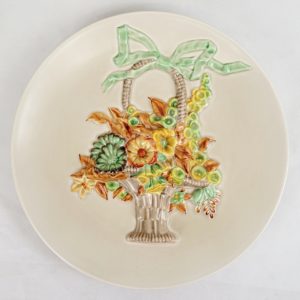Japanese, WW2, Type 30 Arisaka Sword Bayonet with Hooked Quillon, Made by a subcontractor of Nagoya Arsenal, with Original Scabbard
£220.00
1 in stock
Would you like to find out more about this product?
Enquire about this product
Your message was successfully sent!
Your message was sent. We will contact you shortly.
Description
Approximate Measurements: 39.5cm blade, 50.9cm overall
Background:
*Condition*
Related products
Early WW1 German Gew98 Bayonet With Serial Number And Scabbard
£275.00
War Period British Lee Enfield 1907 Pattern Bayonet
£155.00
1888 Enfield 1876 Pattern Bayonet And Scabbard Bushed For .303
£195.00
Rare WW1 German Gew98 Imperial Bayonet and Scabbard
£175.00
Important!
*In order to complete the online purchase we will require a picture/scan of a photo ID (Driving Licence, Passport or an official document with a recent picture). If you don't posses any such document please call to buy.
If we consider that the proof of ID is incorect or insuficient, we reserve the right to cancel the transaction.
*We also reserve the right to cancel the transaction with a full refund if there is any suspicion that the provided item will be used in any way contrary to the laws and legislation of UK.


